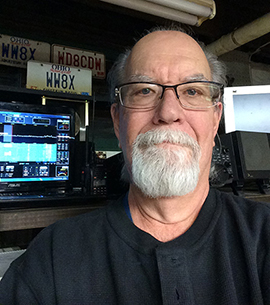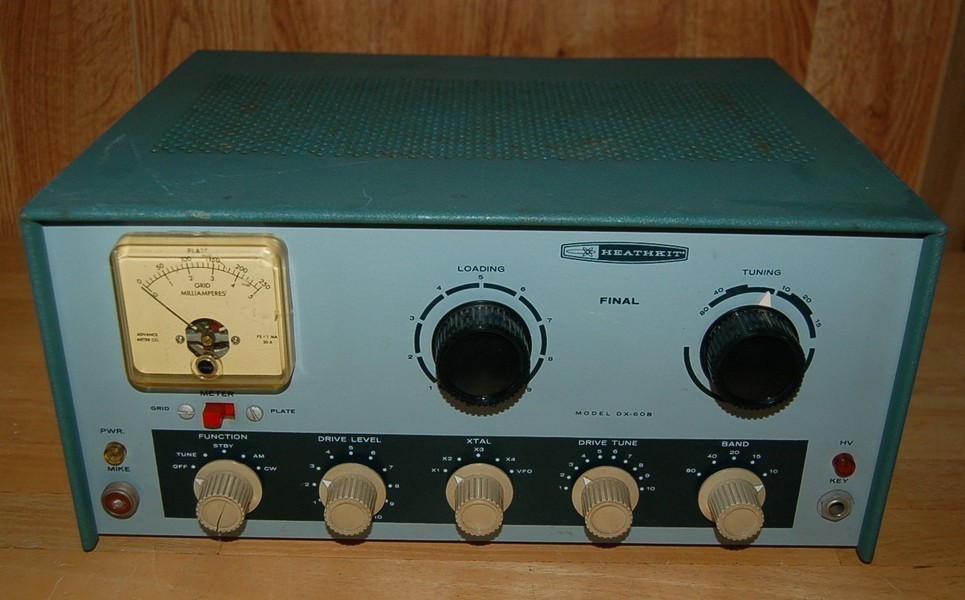
A CBC Story by Paul Colbourne · for CBC N.L. · Posted: Jan 27, 2019 7:00 AM
It’s not just a hobby. In a crisis, amateur operators provide a lifeline !!
Larry Horlick (VO1FOG) still marvels when he thinks about what happens when he turns on his ham radio.
“I’m taking my voice and that radio is converting it into an electrical signal and the amount of electrical energy that he is receiving is so minuscule,” said Horlick, a Coley’s Point resident who is one of a group of radio enthusiasts in Conception Bay North.
Amateur radio was around for nearly a century before the internet, and to this day is the only form of communication that does not depend on a network.

Even in a world of smartphones, Facebook and texting, ham radio still holds a mystique for many people. More than two million people around the world still use the technology. Of the estimated 40,000 users in Canada, as many as 1,500 live in Newfoundland and Labrador.
An amateur radio user can connect with anyone practically around the world. The only countries that do not allow amateur radio operators are North Korea and Yemen.
The legacy, and appeal, of Marconi
If amateur radio has a prophet, it surely would be Guglielmo Marconi, the communications pioneer who in proved — in St. John’s — that radio waves follow the curvature of the Earth by bouncing off the ionosphere.
No longer did telegraph wires or “ground waves” bind communication. Now it was possible to talk to anyone in the world who also had a transmitter and receiver.
“When other hams discover you are from Newfoundland, they want to know about Signal Hill,” said Horlick, referring to the place where Marconi received a wireless transmission in December 1901. Carbonear ham radio operator David Parsons agreed the allure is strong with colleagues. “A friend of mine visited me last year and that is one of the things he had to do — go to Signal Hill and see where it all started,” Parsons said.
Right in the middle of the action
Geographically, Newfoundland is in the centre of a lot of amateur radio activity, because it happens to be between Europe and the rest of North America.
“We’re centrally located — you’ve got everything all around us here,” Parsons said, pointing to a screen to see which parts of the world are likely to be reachable. “It’s a really good spot for radio.”
For many enthusiasts, amateur radio is a hobby. They log their daily “QSOs,” or contacts. While talking to other people around the world, they exchange weather, call signs or other information.
There are contests on who can make the most contacts over a certain amount of time. Some even talk to astronauts on the International Space Station.

Amateur radio operators like Parsons have made contacts around the world, including this station in Norway, LA4UOA
However, this hobby has a serious side as well. In the event of natural disasters or other emergencies — when more conventional forms of communication go down — amateur radio operators are called on to help.
In the summer of 2017, for example, damage to fibre optic cables meant that internet and phone services failed in much of Atlantic Canada.
Parsons and other amateur operators helped keep communications open. They were on alert to help ambulances and other emergency personnel locate people in distress or to just relay information from one station to another. The incident proved that a communications system that gets taken for granted can be vulnerable.
“The internet, the world wide web, is just that. It’s a web of interconnected signals that are transmitted by satellite,” said Parsons, adding that the chance of failure becomes greater as the world becomes more interconnected with Wi-Fi, satellites and cellular towers.
Parsons and Horlick both belong to BARK — the Baccalieu Amateur Radio Klub — which operates in the Conception Bay north area. The club holds an annual field day every year where about a dozen local operators use only generated power to make contact with hundreds of other operators worldwide.
The Society of Newfoundland Amateur Radio — or SORNA — is another organization that is trying to recruit new members through education and community outreach.
Becoming an amateur radio operator, though, it is not as simple as buying the equipment. After all, a ham radio is capable of operating in the commercial radio spectrum, where ships and air traffic controls operate. Operators require a licence, and the licensing process is a verification of your skill.
“You really got to know what you are doing, so you do not interfere with their operations,” said Horlick. “That could be very dangerous.”
Source: CBC Newfoundland and Labrador






